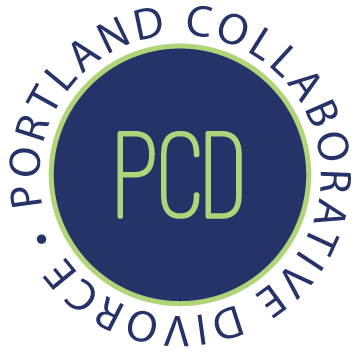Why A Coach?
by Zvi Strassberg, Ph.D.
A key attraction of collaborative divorce is that clients have the opportunity to work together with each other and with professionals as part of a team to meet the needs of the family. This is in contrast to a traditional litigation model, which is adversarial and positional in nature.
A collaborative team always includes the clients, each client’s attorney, and sometimes a financial neutral. The team often also includes a coach who works with both clients, or two coaches who each work with a respective client (and in concert with each other as part of the group of professionals). Coaches are mental health professionals such as psychologists, counselors, and social workers who help clients through the psychologically challenging aspects of the divorce process.
It is not unusual to hear clients initially question why they individually or jointly would benefit from a coach. Following are my three top reasons why a coach or coaches can be critical to the success of the collaborative process:
1. Old habits are hard to break.
Collaboration means being engaged in give-and-take discussions even when they are uncomfortable and difficult. Clients enter the collaborative process with the intention of working together, and such intention is necessary for success, but it is not sufficient. Quite often the same habitual ways of dealing with decision-making and conflict that have contributed to divorce arise while clients are trying to collaborate.
One common example is when disagreement quickly escalates to mutual upset and ‘butting heads’, rather than staying focused on mutual solutions. Another is when one partner pursues discussion while the other pulls away, repeating a history in which one has been in the dominant role and the other has been ‘trained’ or otherwise reluctant to speak his or her own mind.
Coaches help clients shift toward collaborative engagement. This will typically include ‘generic’ guidelines for shaping effective communication and negotiation, such as for the flow of turn-taking, respecting the other person’s need to be heard, and active listening strategies. It also means examining and raising joint awareness of decision-making, communication, and conflict patterns that have been problematic for the specific client relationship, and creating a shared plan to address those specific challenges. For example, we may agree to ‘call out’ habitual problems when they are happening and interfering with progress, in order to recover and redirect the discussion; if becoming emotionally overwhelmed has been an issue, take breaks when one or both clients need to compose their thoughts; if one client has a history of being perceived as rigid, provide acknowledgment for ‘reaching out’ to the other client; and other myriad examples tailored to the client needs. We also debrief with clients in private on how to improve, and on successful moments that can be built upon. In so doing, coaches help clients align their collaborative intentions with their actual interaction patterns.
2. A new approach to interactions takes specific individual skills and capacities.
Interaction patterns are by their nature relational, involving two or more people. However, reshaping interactions often requires development at an individual level as well, as we each perform at our highest level by bringing our best skills and capacities to the table.
Areas for personal development that often emerge are:
the need for emotional regulation skills (for anger, resentment, anxiety, sadness/loss);expanded perspective-taking (being open and able to understanding the other person’s hurts and hopes); andmeans of verbal expression that engage rather than feel threatening to the other person (such as how to disagree with ideas but preserve the other person’s sense of being respected).
These are but a few of many possible examples.
Coaches thus work with clients individually to understand their emotions, thought processes, and behavioral histories in order to tailor development of the individual skills and capacities that can help clients be at their best in collaborative meetings.
3. Attorneys want to understand how to work most productively with their own and the ‘other’ client.
For attorneys, shifting from a law-centric to human-centric approach means needing to understand the motivations, abilities, and even liabilities of the people they are invested with serving. My experience with attorneys who choose to practice in the collaborative area is that they are among the most psychologically savvy of their profession.
However, as a matter of training, mental health professionals have knowledge bases and perceptual lenses that can broaden and deepen attorney understanding about how to help clients make progress toward the agreements that will meet the needs of the individuals and family.
One form of support is rooted in the sorts of coaching work with clients that is described above- keeping attorneys informed about the relational and individual development work that is needed, so they can reinforce that work when they meet individually with clients, and can incorporate that work in how meetings are conducted (along with coaches).
There are also times when an individual client faces mental health or substance use/abuse issues. The attorney may wish to assess the client for special needs in these areas. Having a mental health professional on the team provides a resource for assessing client fitness to participate in decision-making processes, how to adjust and tailor their participation, and if necessary, referral to additional treatment resources in order to gain or regain fitness to participate as an agent on their own behalf in the collaborative process.
In summary, clients come to the divorce process amidst a host of difficult emotions, seeking a productive way forward for themselves and their children. Coaches can be invaluable resources for helping their collaborative intentions become collaborative action, and for helping the attorneys to optimally serve clients in this endeavor.

